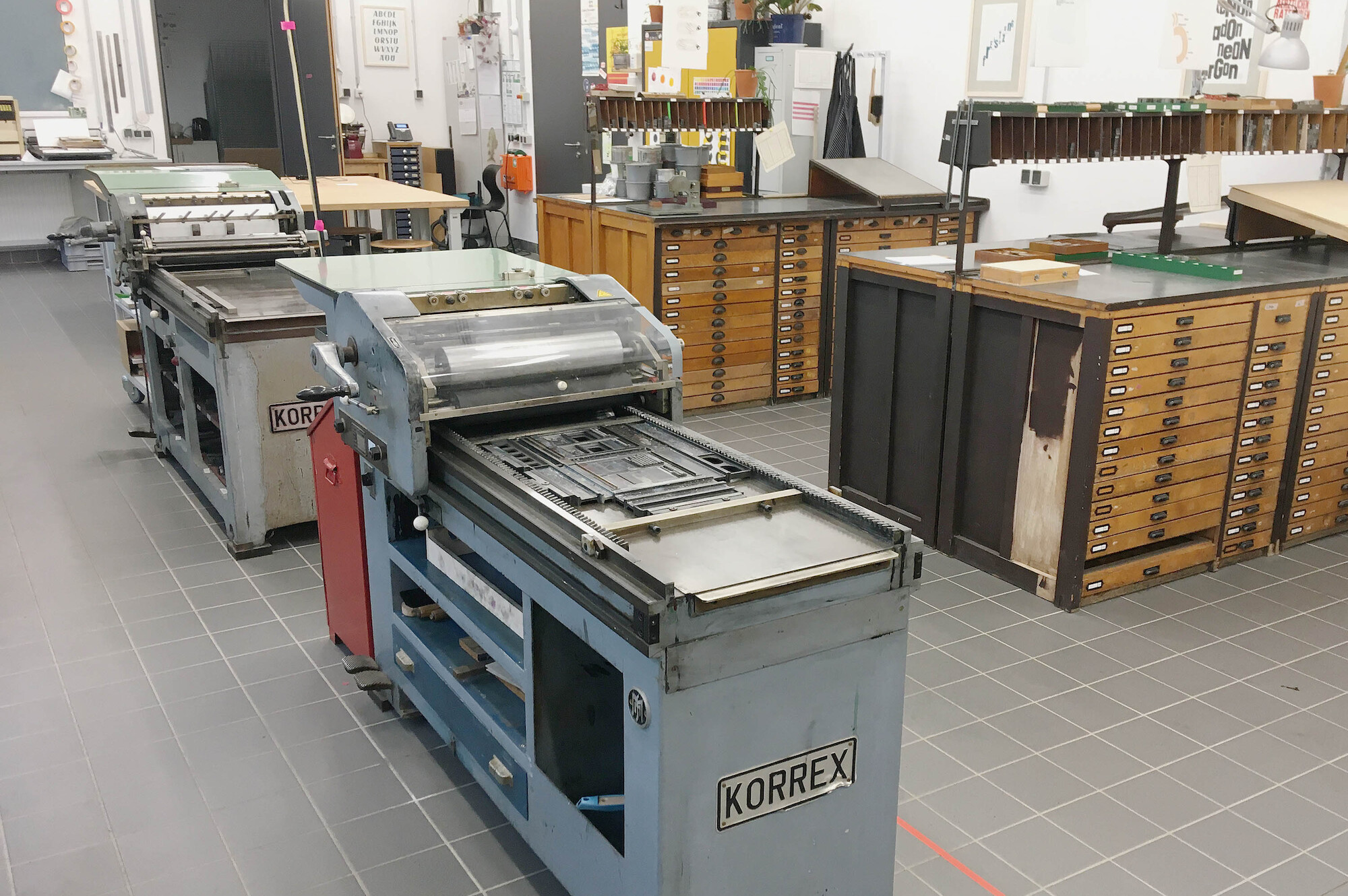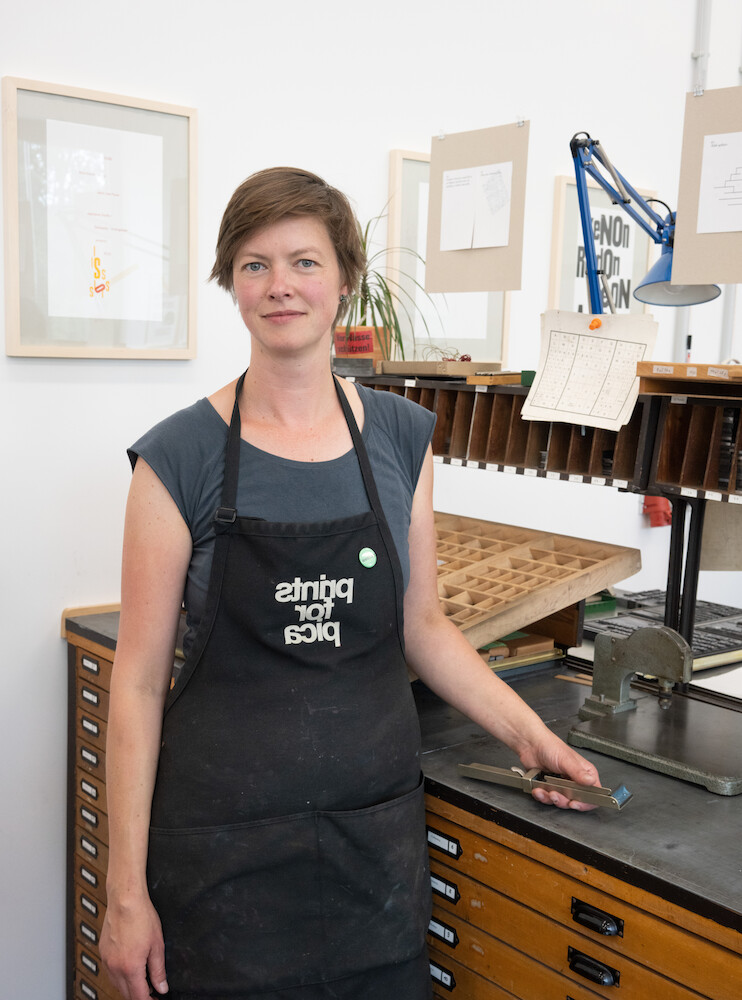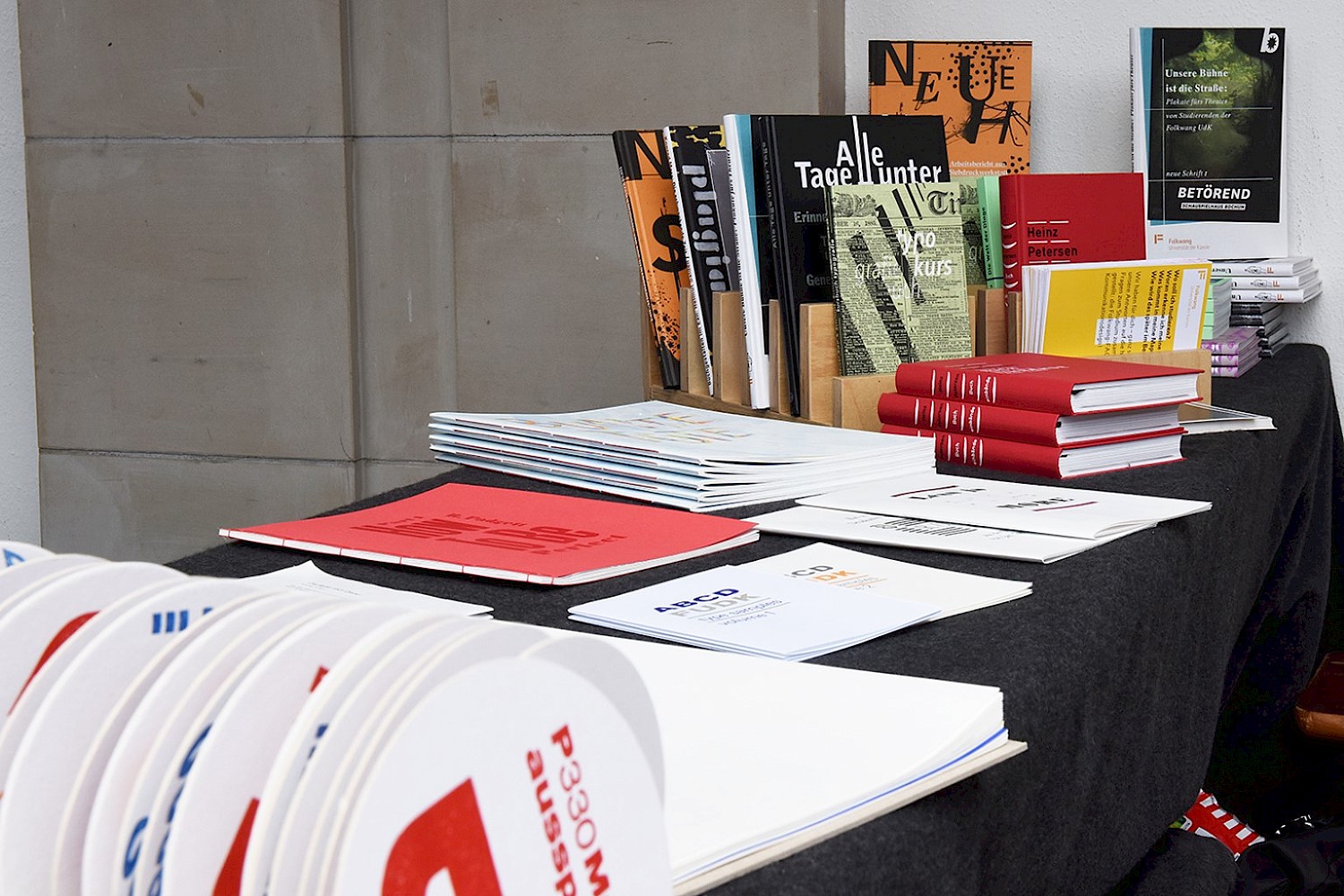Learning the Techniques of Relief Printing
Relief printing is the oldest known printing method. It remains in use today for artistic prints, posters, illustrations, book art, and high-quality small-edition prints. In the workshop course "Typesetting and Relief Printing", students explore the various traditional techniques and creative possibilities of relief printing—by setting type and printing graphics themselves in our Letterpress Workshop.
Typesetting: Staging Texts
Whether it is a single word, a poem, or a full book page, typesetting with lead letters allows students to design and stage text. They select and arrange typefaces, spacing, and proportions, prepare the printing form and press, and create their first proof prints. By applying typesetting rules practically, students deepen their theoretical knowledge and experience typography in a direct and tangible way.
Illustrative Techniques: Expanding Artistic Expression
Using illustrative relief printing techniques such as woodcut, linocut, and material printing, students develop artistic graphics—often in combination with wooden poster typefaces. Through small design exercises, they explore creative expressions of each technique, developing visual language through materials. Experimentation with various papers, inks, and printing surfaces—such as wood, linoleum, tetrapak, fabric, or acrylic plates—is encouraged. Digital designs can also be translated into printing plates via laser-cut polymer clichés for use on a proofing press. Through hands-on experience in relief printing, students reinforce their understanding of design theory while expanding their graphic expression.
Dynamic Interdisciplinarity: Bridging Fields and Techniques
The Letterpress Workshop at Folkwang University of the Arts is well-equipped with a diverse selection of high-quality typefaces, ranging from 6-point to 40-cicero, multiple proofing presses, and hand-operated platen presses. Students in the Department of Design are welcome to work independently in the open workshop, outside of structured courses. As Workshop Director and Book Artist, I provide guidance and consultation throughout their creative process.
Disciplinary crossovers are common, both technically and collaboratively. For example, photography students may transform halftone images into polymer clichés for printing. Workshops also collaborate closely, such as processing printed sheets from the relief workshop into bound publications in the Bookbinding Workshop. Regular excursions to the Leipzig Book Fair and the Klingspor Museum Offenbach offer further inspiration and broaden students' perspectives. The Letterpress Workshop is, above all, a space for interdisciplinary exchange.
Annegret Frauenlob, Dipl. Book Arts,
Head of the Letterpress Workshop


